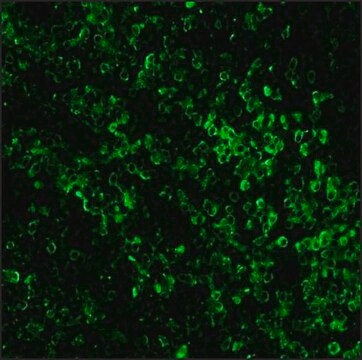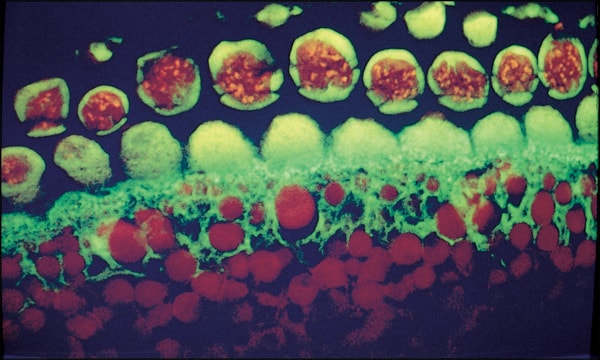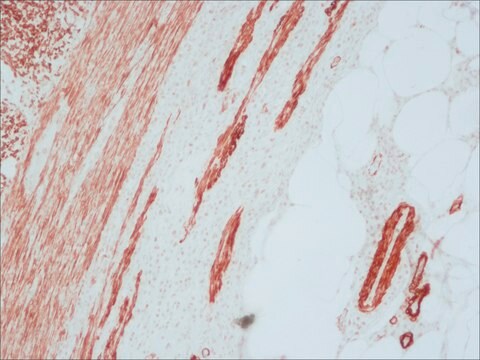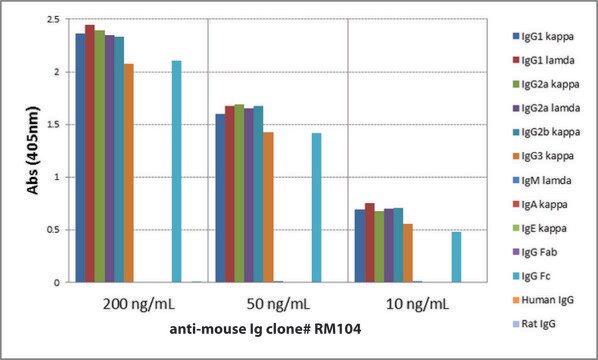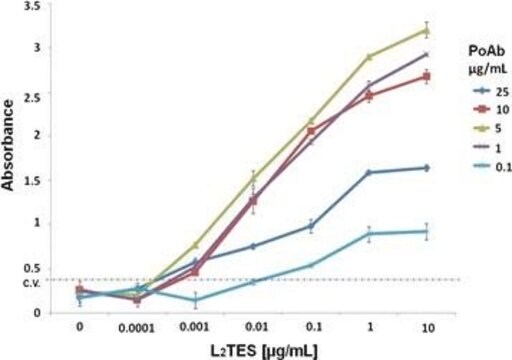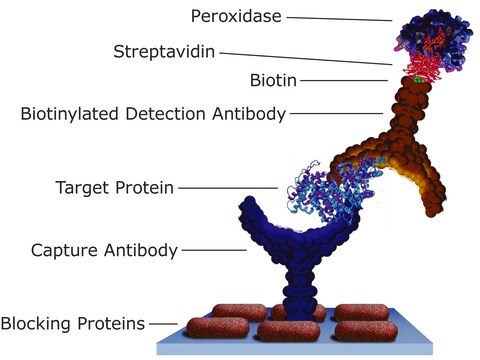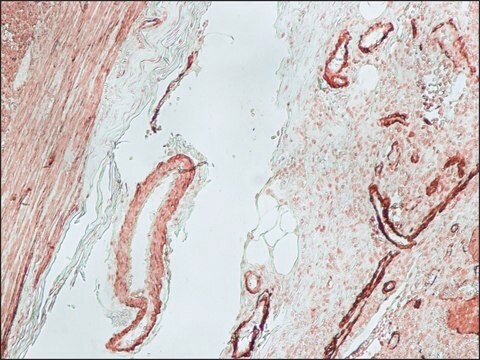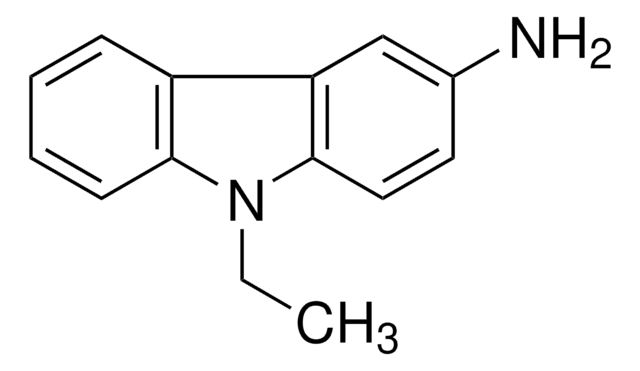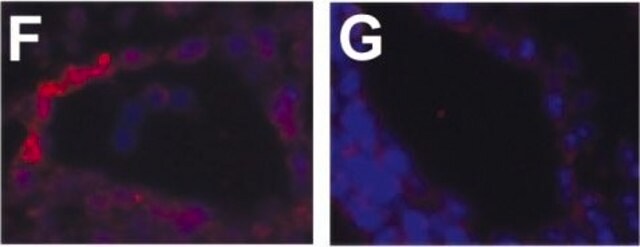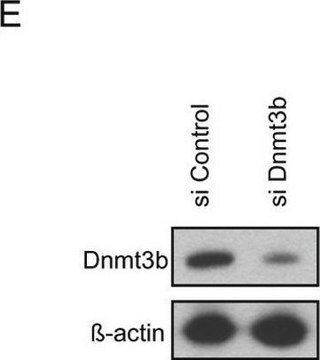B8520
Anti-Mouse IgG (whole molecule)−Biotin antibody produced in rabbit
IgG fraction of antiserum, buffered aqueous solution
Faça loginpara ver os preços organizacionais e de contrato
About This Item
Produtos recomendados
fonte biológica
rabbit
conjugado
biotin conjugate
forma do anticorpo
IgG fraction of antiserum
tipo de produto de anticorpo
secondary antibodies
clone
polyclonal
Formulário
buffered aqueous solution
técnica(s)
direct ELISA: 1:200,000
immunohistochemistry (formalin-fixed, paraffin-embedded sections): 1:300
western blot: 1:400,000-1:800,000
temperatura de armazenamento
−20°C
modificação pós-traducional do alvo
unmodified
Descrição geral
Immunoglobulins (Igs) belongs to the immunoglobulin super-family. There are five different types of Immunoglobulins. Each immunoglobulin has two heavy (H) and two light (L) chains held together by disulfide linkages. Each light comprises of one variable N-terminal region and a constant C-terminal region. Heavy chain has one variable N-terminal region and three or four constant (CH1-CH4) C-terminal region. IgG is abundant immunoglobulin in human serum.
Imunogênio
Purified mouse IgG
Aplicação
Anti-Mouse IgG (whole molecule)-Biotin antibody has been used in
- immunofluorescence
- immunoblot
- direct enzyme linked immunosorbent assay (ELISA)
- serotyping assay
- immunohistochemistry
Ações bioquímicas/fisiológicas
Immunoglobulin G (IgG) is a glycoprotein antibody that regulates immune responses such as phagocytosis and is also involved in the development of autoimmune diseases. Mouse IgGs have four distinct isotypes, namely, IgG1, IgG2a, IgG2b, and IgG3. IgG1 regulates complement fixation in mice.
forma física
Solution in 0.01 M phosphate buffered saline pH 7.4, containing 15 mM sodium azide.
Exoneração de responsabilidade
Unless otherwise stated in our catalog or other company documentation accompanying the product(s), our products are intended for research use only and are not to be used for any other purpose, which includes but is not limited to, unauthorized commercial uses, in vitro diagnostic uses, ex vivo or in vivo therapeutic uses or any type of consumption or application to humans or animals.
Não está encontrando o produto certo?
Experimente o nosso Ferramenta de seleção de produtos.
Código de classe de armazenamento
10 - Combustible liquids
Classe de risco de água (WGK)
nwg
Ponto de fulgor (°F)
Not applicable
Ponto de fulgor (°C)
Not applicable
Escolha uma das versões mais recentes:
Já possui este produto?
Encontre a documentação dos produtos que você adquiriu recentemente na biblioteca de documentos.
Os clientes também visualizaram
In Vitro and In Vivo Detection of Mx Gene Products in Bovine Cells following Stimulation with α/β Interferon and Viruses
Muller-Doblies, D., et al.
Clinical and Vaccine Immunology : CVI, 9(6), 1192-1199 (2002)
E P S Conceição et al.
The Journal of endocrinology, 230(2), 263-274 (2016-06-22)
Rats overfed during lactation show higher visceral adipose tissue (VAT) mass and metabolic dysfunctions at adulthood. As both vitamin D and glucocorticoids change adipogenesis, parameters related to metabolism and action of these hormones in the adipocyte can be altered in
Increased IgA Expression in Lung Lymphoid Follicles in Severe Chronic Obstructive Pulmonary Disease.
Maha Zohra Ladjemi et al.
American journal of respiratory and critical care medicine, 199(5), 592-602 (2018-10-20)
Accumulation of B cells and lymphoid follicles (LFs) has been described in chronic obstructive pulmonary disease (COPD) airways, but the functional status of lung B cells remains poorly known. To characterize LFs for expression of IgA, the main mucosal antibody.
Doris Müller-Doblies et al.
Clinical and diagnostic laboratory immunology, 9(6), 1192-1199 (2002-11-05)
This study focused on products of the bovine Mx1 gene as specific markers for acute viral infections. The rationale for this is the fact that viral infections are commonly paralleled by the synthesis, release, and remote action of alpha/beta interferons
Structural and functional composition of the developing retinogeniculate pathway in the mouse
Jaubert-miazza L, et al.
Visual Neuroscience, 22, 661-676 (2005)
Nossa equipe de cientistas tem experiência em todas as áreas de pesquisa, incluindo Life Sciences, ciência de materiais, síntese química, cromatografia, química analítica e muitas outras.
Entre em contato com a assistência técnica